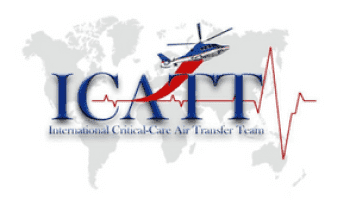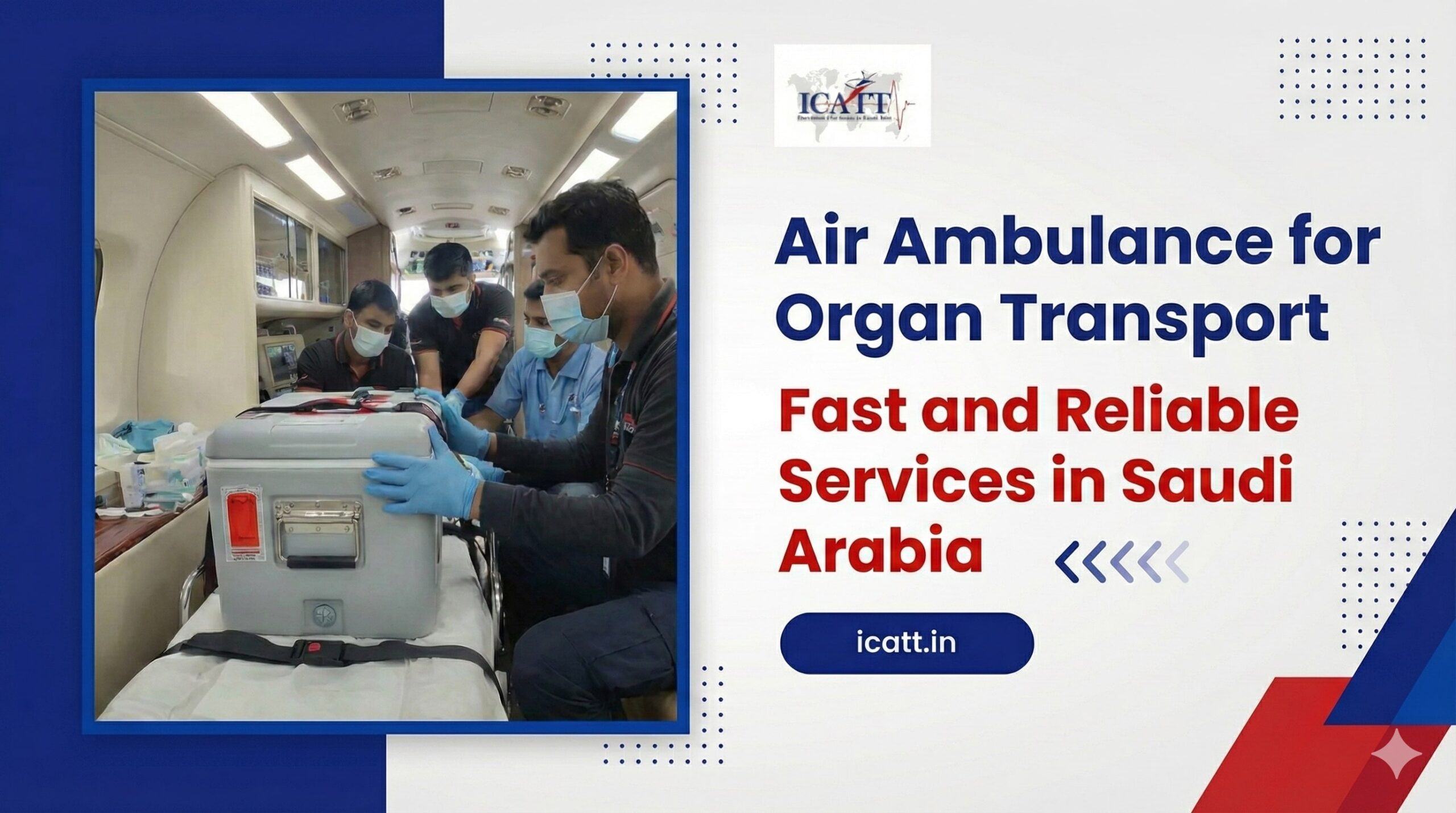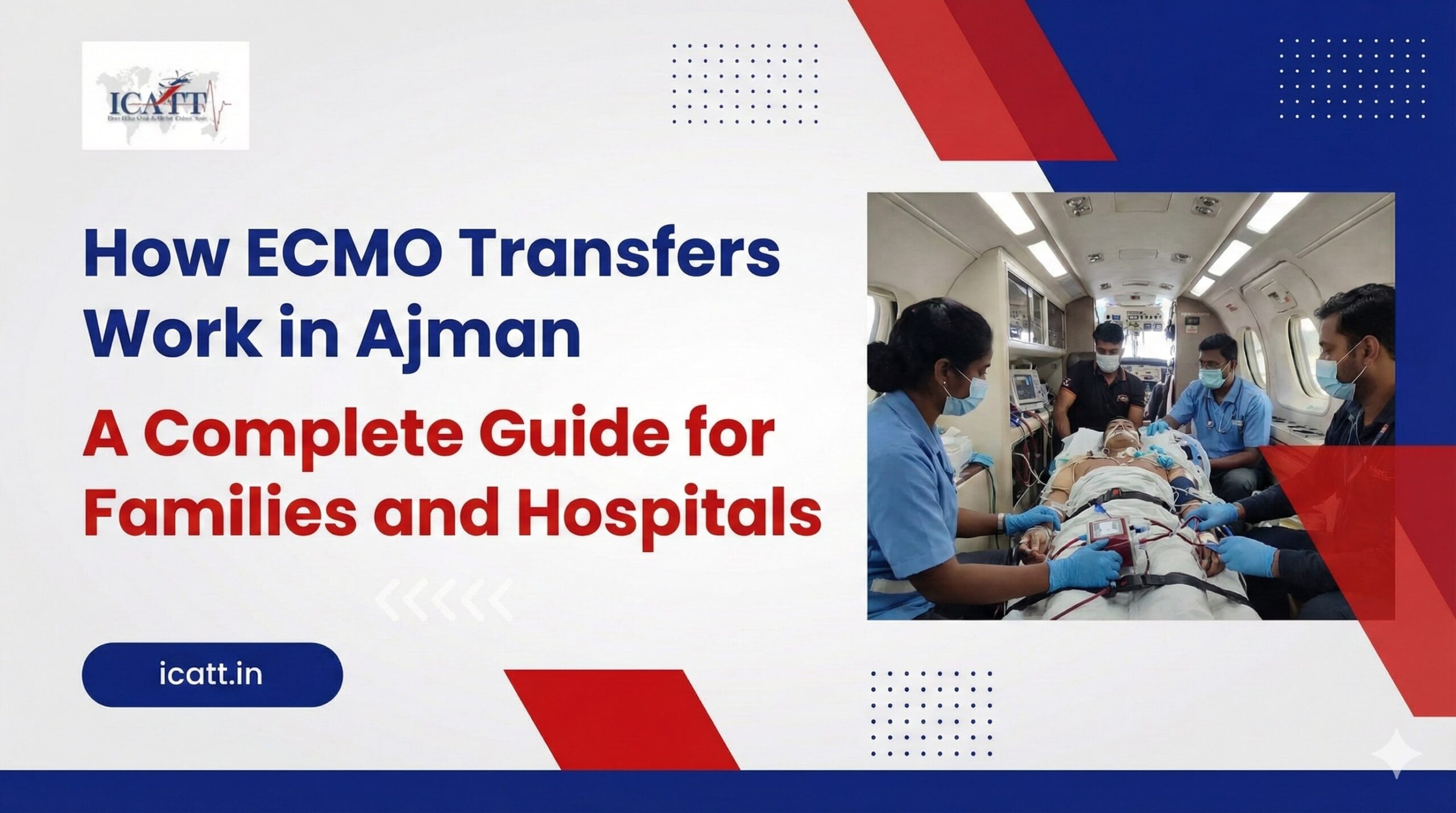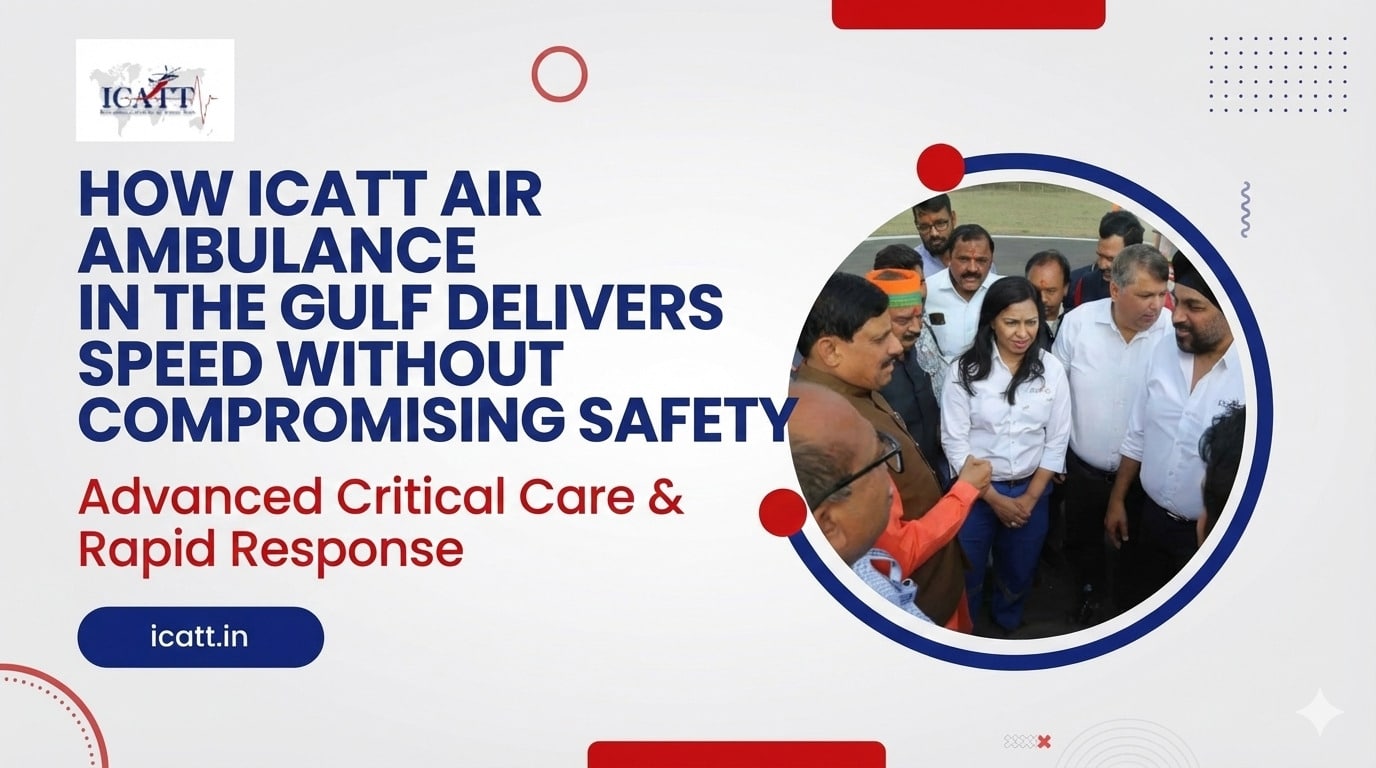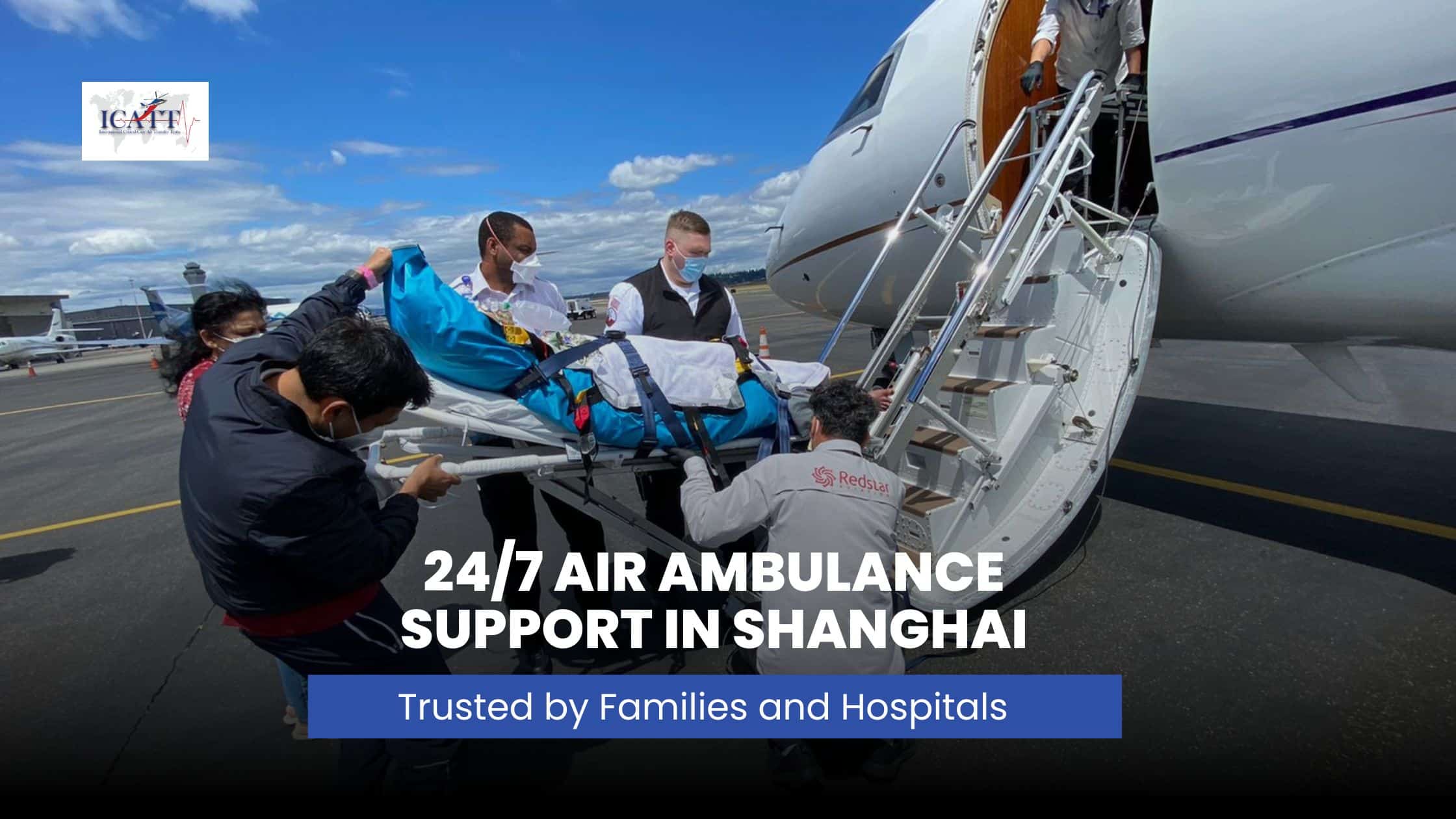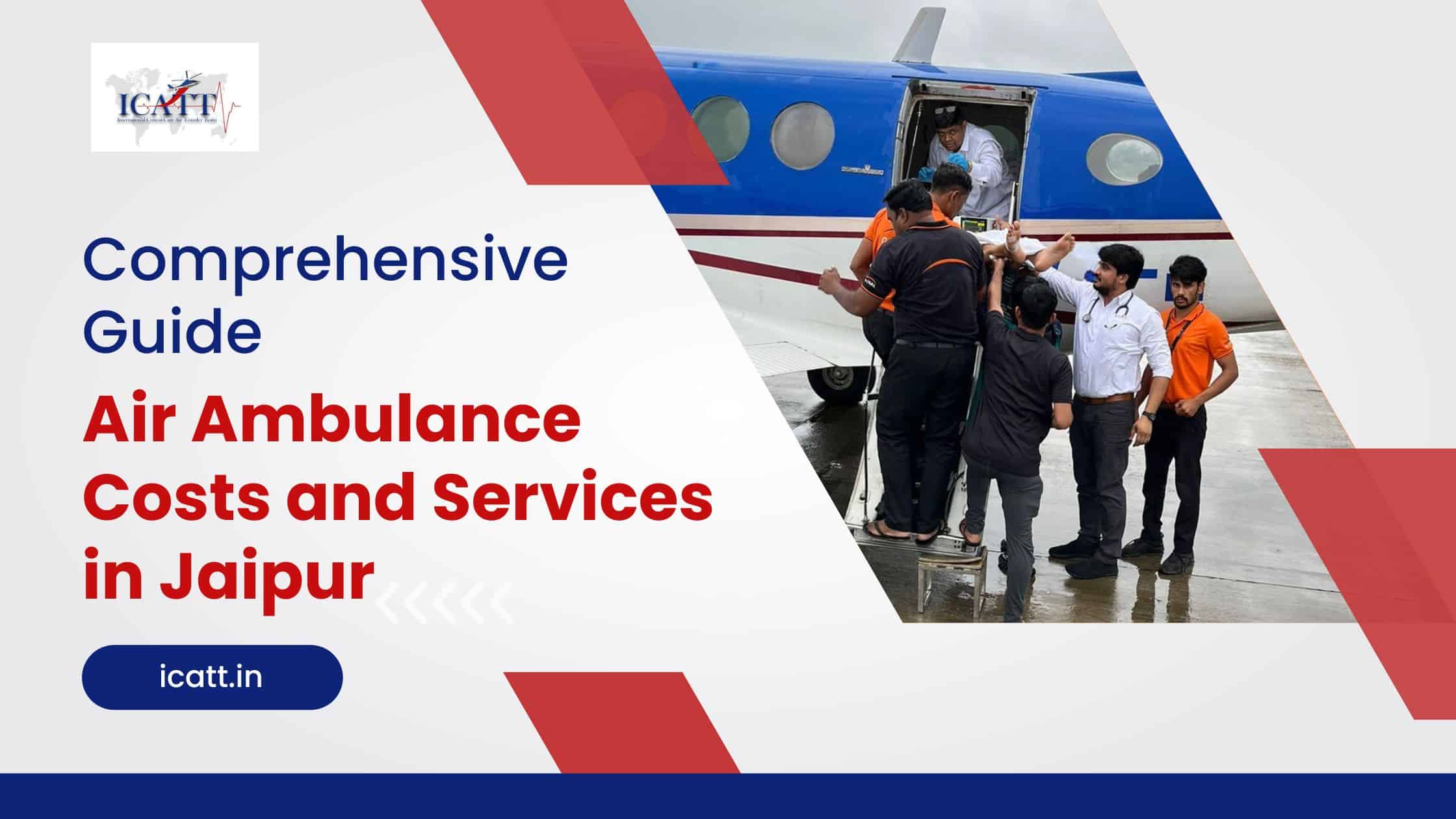Remote areas are heavenly to live in with calm mornings, days spent on farms, fresh air, and a peaceful scenic life far away from the constant noise of metro cities. A lot of people even decide to retire in a place which is so close to nature. But one very important question that usually goes unnoticed is: what happens if someone falls seriously ill in a remote area? Where can we find the nearest hospital because the majority of medical facilities are miles away or there isn’t even a proper road to reach one?
Yes, these situations are quite real, and the team at ICATT has handled many such cases. In big cities, we assume medical help is always just a few minutes away. But in remote villages, hilly terrains, or island regions, the story is very different. There’s the absence of the right medical facility, roads are not proper to commute to, rough terrain, and in some cases, no roads at all, which leads to additional struggle. Moreover, in many such cases people have lost their lives simply because they were not aware of the right mode of emergency transport that could have saved their loved ones.
This is exactly where an air ambulance in remote areas becomes a true lifeline. It is more than just a helicopter or aircraft, but it’s more like a mini hospital in the sky, which includes doctors, paramedics, ICU facilities, and life-saving medicines for any situation. This service makes the impossible possible by bringing urgent care within reach in no time, no matter how far or isolated the patient may be.
The Challenge of Remote Healthcare
Living in a metro city has almost become a trend today. People prefer moving there for jobs, education, and better opportunities. One of the biggest advantages they mention is convenience, from daily needs to healthcare. In fact, reaching a hospital in just 10–15 minutes is taken for granted in cities.
But think about living in a remote hilly area, a desert village, or a flood-affected region where the nearest hospital is a few hours away. In such cases, you aren’t really battling illness or injury; the challenge is to get immediate access to specialized care. This is where air ambulances step in as a lifeline.
Here are the biggest challenges people in remote areas face:
- Lack of Healthcare Infrastructure
- Many remote villages or different areas of cities that are counted in remote areas don’t have fully equipped hospitals. At best, there may be a small clinic or government dispensary that can handle only minor cases during working hours of the day.
- Advanced care like neurosurgery, cardiology, or trauma management is often missing, and no other help is readily available.
- Shortage of Specialists and Doctors
- Even if a basic hospital exists, or at the government dispensaries, there may not be a cardiologist for a heart attack or a neurosurgeon for a brain injury. In fact, a general doctor is only available.
- Families are left with no choice but to transfer the patient to a distant urban hospital.
- Poor Road Connectivity
- Bad or non-existent roads not only delay ambulances, but the delay makes situations even more hectic and keeps affecting the time.
- In hilly areas, islands, or flood-hit zones, travel on the ground isn’t possible and air ambulances are the only solution.
- Long Distances to Urban Hospitals
- A hospital where the cases of handling trauma, stroke, or critical surgeries could be up to 100-200 km away.
- In case of emergencies, every minute matters, and such distances make ground transfers a lot riskier.
- Time-Critical Emergencies
- Time-critical medical emergencies such as strokes, heart attacks, or significant trauma require quick intervention. So, please remember, quick response in emergency matters the most to save a life.
- If there is 1-2 hours delay for emergency medical intervention, there can be permanent damage or loss of life.
These are the biggest challenges of people in remote areas, and this is where air ambulances save lives in remote areas; they bridge the gap between the patient and the hospital when ground options fail.
What Makes Air Ambulance in Remote Areas Different?
It’s common understanding of many people that an air ambulance is just a helicopter or small aircraft which helps flying a patient from one place to another (from one city or from one state to another). But the truth is, it’s much more than that. These are not merely flying aircraft; but these are flying ICUs, which come with life-saving equipment like ventilators, oxygen supply, cardiac monitors, defibrillators, and emergency medicines. Along with this, there are paramedics and trained critical care doctors on board to start the treatment before the patient reaches the hospital.
What makes an air ambulance in remote areas truly unique, however, is not just the equipment but the way it adapts to the toughest situations:
- Reaches Where Roads Cannot
Whether it’s a flooded town, a valley or a desert village, an air ambulance can still land nearby to potentially save a life. Also, unlike regular travel to a hospital, patients in air ambulance receive treatment and are monitored throughout.
- Cuts Down Critical Hours
What would take 8–10 hours by road can often be covered in less than an hour by air. For emergencies such as strokes, trauma, or cardiac arrests, that single hour could be the deciding factor from life and death.
- First Line of Response in Disasters
When a natural disaster like a flood-hit village, a snow-covered valley, or a desert hamlet, an air ambulance becomes the first emergency medical response which helps to reach the doctor or evacuation area.
- Specialized for Remote Conditions
Unlike regular ambulances, these aircraft are specialized to tackle long offshore runs, trickier short runway or landing conditions, and prolonged periods of medication transfer or backhaul. They don’t just transport patients they bring critical care directly to remote doorsteps.
So, in general it may look like just another aircraft, an air ambulance in remote areas is a lifeline that bridges distance, time, and survival.
The Future of Air Ambulance in Remote Areas
With growing demand, the role of air ambulances is only expanding all across and what’s making them more efficient is technology. GPS tracking, faster aircraft, telemedicine support, and AI-based monitoring are slowly becoming part of air medical services.
In the future, the collaboration of government agencies, hospitals, and air ambulance providers will enable patients to receive more accessible air ambulance services at an affordable cost, ensuring that no individual’s life is placed at risk simply due to their geographical location. But right now, we at ICATT ensure that our customers get to their destination on time with the right facilities.
How ICATT Can Help in Remote Medical Emergencies
When it comes to medical emergencies in remote or difficult to reach locations, families often feel helpless because every passing minute matters. This is where ICATT Air Ambulance steps in. As it can do more than just be a transport service; it can be a complete medical partner in a time of crisis.
Here’s how ICATT makes a difference:
- 24/7 Availability Across India
Emergencies don’t wait for the right time, and neither does ICATT. That is why the team is available round-the-clock, ensuring that patients in the most remote or riskiest corners of the country have access to immediate evacuation 24/7 when the need arises.
- Flying ICU With Expert Care
ICATT air ambulances are equipped with ventilators, oxygen supply, defibrillators, and critical medicines. More importantly, highly trained doctors and paramedics are on board, so treatment doesn’t wait until they reach the hospital it begins the moment the patient is onboard.
- Experience in Remote & Disaster Evacuations
ICATT has successfully handled missions where ground ambulances couldn’t reach. Whether it’s a landslide in the hills or a medical emergency in a flood-hit zone, ICATT team has the expertise to land in difficult conditions and evacuate patients safely.
- Seamless Hospital Transfers
ICATT’s relations and tie ups with top hospitals ensures patients are transferred to the right facility without any slightest delay. From remote areas to advanced urban hospitals, the transition is smooth, saving precious hours.
- Compassion Beyond Care
Beyond medical excellence, ICATT understands the emotional stress of families in such situations. Their team works with empathy and constant communication, reassuring families that their loved one is in safe hands.
In short, ICATT is more than just an air ambulance provider; it’s a life-saving connection between remote patients and advanced care, regardless of distance or barrier.
Hence, for those living in cities, advanced health care is only a short drive away. But for those in remote locations, distance remains the most significant barrier to survival. That’s why the awareness of air ambulances availability in remote areas is highly important as emergency help is not just a luxury; it’s a necessity.
Every rescue story reminds us of one essential message: how air ambulances save lives is not simply about speed; it is about providing hope where hope doesn’t currently exist.
For more information or to know the cost of air ambulance services by ICATT you can contact the team or drop your queries by mail.
